“The merry band of chefs are the equivalent of jazz musicians… constantly improvising, cooking with spontaneity, reacting to an ingredient in the moment.”
By Andy Clurfeld
It’s lunchtime on a Tuesday, and Kyle Hopfensperger and Dan Pollard are talking dinner.
Specifically, what’s going to be on the menu for dinner at 2nd Jetty Seafood in Sea Bright, where fishes are the star, Kyle is the chef-owner and Dan is the forager of the finest specimens that come from our waters.
“We talk every day,” Kyle says.
“Sometimes four times a day,” Dan notes.
“If he’s closing at 5:00, I’ll call Dan at 4:50 to get in more for that night, if I think we need it,” adds Kyle.
“And if he doesn’t call then, I’ll call him,” Dan says, as they both laugh.
Dan manages Lusty Lobster, a wholesale-retail seafood enterprise based in Highlands, right over the Highlands-Sea Bright Bridge from 2nd Jetty. He’s as critical to the operation of the restaurant—which sits across a narrow stretch of Ocean Avenue from the Atlantic Ocean and catty-corner from the entrance to Sandy Hook—as Kyle’s cohorts in his kitchen, chefs Daniel Ciambrone and Bruce Buzzelli.
On this day, Dan Pollard is prepped and ready: “On Tuesdays, I go through all my sheets—my fish sources, locals like Viking Village, Bivalve Packing, Barnegat Oyster Collective—and figure out what I need and what I can get for my store and my special people.”
His “special people” are his chefs. He gets in touch with some of the very best chefs in New Jersey, those in particular who specialize in seafood, and lets them know what’s coming out of the water that week. Kyle listens as Dan recites and jumps, immediately, on the kampachi.
“Kampachi! Yes!” he says, scoring the buttery, sushi- grade fish that’s a kind of extra-exquisite yellowtail.
“I can get you sushi fluke – that’s local, out of Viking Village,” Dan says. He gets another nod from the chef, who’s already talking about doing a raw-fishes special on one of the “surfboard” platters made from the wood of fallen trees especially for 2nd Jetty by Doug Rella, of Brick. After all, his personal fish forager has Bambalam oysters, among others, on the bill of available local fare.
“Dayboat mahi, really good tuna, domestic sword—” “Yup, yup, yup.”
“Black sea bass?”
“For sure! We like to do a whole roasted fish.” “East Coast halibut? Scallops?”
“Do it, do it; I’ll figure it out.”
Dan smiles. Once upon a time, much of Lusty Lobster’s wholesale business came from high-volume shore restaurants. “But the business has changed,” he says. “The new chefs, and their creativity, mean eating out is not about prime rib anymore. I’m not buying the frozen stuff; I’m buying all fresh.”
He’s selective, too, sourcing, for one example, tuna from “ten different sources so I get the best. I won’t buy garbage.”
They’re riffing now, fast and furious, as Kyle talks about making jalapeno jam and dragon sauce and Dan muses about uni and how the political unrest in Venezuela is affecting the supply of primo jumbo lump crab.
Now it’s my turn to think about dinner. For in a couple of days, I will be popping into 2nd Jetty to see what this collaboration between chef and fish forager brings to the table…
We’ve ordered so many appetizers that we consider annexing another table on which to place them. That would be unfair to everyone else in the main dining room of 2nd Jetty Seafood, a space that’s equal parts retro, nautical and scrubbed-clean galley. Unfair, clearly, though it might reference the casual-cool attitude found at, say, a neighborhood joint on the outskirts of Belfast, Maine, which would well-serve the mission of the crew that makes 2nd Jetty the best seafood restaurant in New Jersey.
The kitchen has a plan to avoid space-encroachment: one of those custom-made surfboard platters. On it, we find a tower of tuna, fluke sashimi, a sweep of oysters, scallops topped with uni, a circle of salmon, and a tian of sliced avocado stuffed with pickled onion and radish. It’s gorgeous. It’s quickly decimated.
First, the Bambalam oysters, their slurpy salinity finishing cunningly with a flash of sweetness, come dotted with green roe and rosy-orange tobiko and turn an oyster-avoider at my table into an oyster-eater. Those Barnegat scallops may be rich and dense, yet they rival the uni for meltability. Credit a spare sprinkle of black lava salt, micro-chop of cucumber and a spray of lemon juice for reining in the richness. Fluke, so ethereal it looks shaved rather than sliced, is the sandwich meat between a rasher of cucumber matchsticks and a schmear of the jalapeno jam that had me curious. More of a chunky, mouth-warming preserve, it stunned me with its compatibility to the bristling fish. Maybe it was the base of frothy aioli, glowing with the color and flavor of turmeric and citrus, that brought it all balance. It contrasted quite nicely with the poke-esque cubes of tuna tossed in soy and yuzu and threaded with verdant green seaweed and a chop of fiery chilies. Speaking of seaweed, the chef team leaned slices of salmon that would make a sushi master proud against a haystack of lighter lime ‘weed, and finished the plate with cucumber in another form: a pert, tart-spiced relish. P.S.: The avocado package was a terrific palate cleanser.
Kyle Hopfensperger, Dan Ciambrone, Bruce Buzzelli and their chef-colleague Francisco Lopez have, by all accounts, fun blowing out the insides of raw coconut to make coconut shells for poke. I can’t spoil their fun by telling you the how-to story before they can. But the results are the kind I most appreciate: With bluefin tuna (on this night) cubes rolled in a sprightly ginger-citrus sauce and micro-cilantro leaves sprawled on top, the poke needs only the speckle of black sesame seeds to taste finished. You can, if you’d like, play around with the accompanying fried wontons and slivers of avocado, or go daring and dip the tuna into bubbles of sambal- laced dragon sauce, hot wasabi aioli or sweet-tart hoison.
Once you’re a regular at 2nd Jetty, you’ll do the fish tacos every other time you visit. Mahi-mahi? Sold… just like Kyle said to Dan Pollard. Juicy chunks of the meaty fish rest on shredded cabbage tossed with marinated tomatoes and cilantro, a twirl of pickled red onion on top. I try to roll this all up in the soft taco, but I’m not always successful in sopping up the juices from the lemon and lime the fish is seared with, nor the sunset- color aioli striping the ensemble. I’ll keep trying.
I do ask for a spoon to help me with the lobster sauce keeping company with the crab-stuffed salmon—crab, mind you, that’s been chunked up with cornichons, parsley, and dill in a mustard-mayo mix. I keep that spoon handy to scoop up the Caribbean rice, made with basmati and zapped with pico de gallo and shards of spinach. That’s doing right by a couple of seafood staples, ol’ salmon and crab. So is making a mini-mountain out of grilled bluefin as it buttresses a pineapple-seaweed salad. Dab the tuna in the avocado mousse, for good measure.
I may have fallen hardest for 2nd Jetty’s cooked version of the scallops, given their even, caramel-color sear and pitch-perfect plate partners of red quinoa and wild mushroom mix. And I did take advantage of a spot of jalapeno jam, which didn’t play favorites among its mates. Lots of love in that dish.
2nd Jetty typically has homey desserts—crumbles and cobblers, pies and puddings. Try the Key lime pie, silky and tart and maybe not Marie Jackson-at-Flaky-Tart sublime, but nothing ever will be that divine, or a cinnamon-scented bread pudding, which usually comes with berries.
Do know that nothing at 2nd Jetty is ever exactly the same twice. That’s because Kyle and his merry band of chefs not only cook seasonally, they are the equivalent of jazz musicians: constantly improvising, cooking with spontaneity, reacting to an ingredient in the moment.
No wonder their collaborator, Dan Pollard, works so hard to get them the best: Fishes, once out of water, need true friends at the end of the line.
Need To Know
2nd Jetty Seafood isn’t your typical summer-at-the-shore spot. It’s just as popular with locals as it is with seasonal residents and daytrippers. It’s a BYOB. It also—and this is new-news, as 2nd Jetty starts its third season— takes reservations for inside seating.
Manager Jack Murphy, who runs front-of-the-house operations, often books musicians who perform live outside in summertime. He also books the “kitchen table,” which is a terrific place to have a small party. The “table” is—what else? I mean, these guys are all surfers!—an old surfboard set up in a small room that looks into the kitchen. You can watch the jazz-chefs perform as you dine.
The space, once upon a time, held a bar, and the back room of the lanky restaurant still sports a bar-counter. If you’d like to BYOB and pour yourself a glass back there, maybe grab an app or three, just tell the folks at check-in. Whether it’s during so-called slow times in November or March, or in peak-summer months when the world rolls off Sandy Hook into 2nd Jetty, the crew is friendly, welcoming and helpful.
2ND JETTY SEAFOOD
140 Ocean Avenue, Sea Bright
Phone: (732) 224.8700 • 2ndjetty.com
Major credit cards and reservations accepted. For information about hours and menu prices (which reflect current market prices) please call, visit the website or email 2ndjettyseafood@gmail.com. The Lusty Lobster is located at 88 Bay Avenue, Highlands. 732-291-1548; www.bestlobster.com.
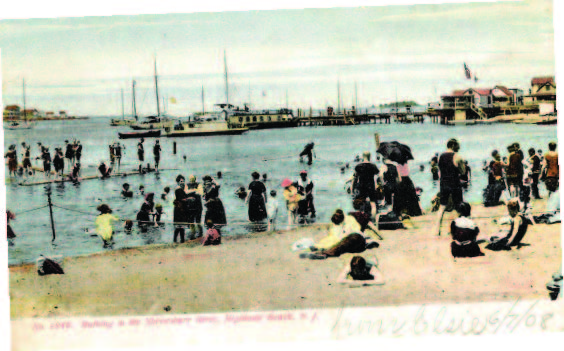
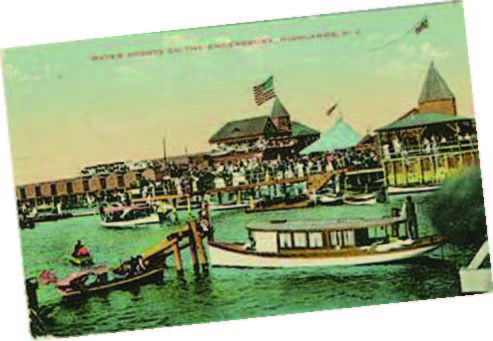
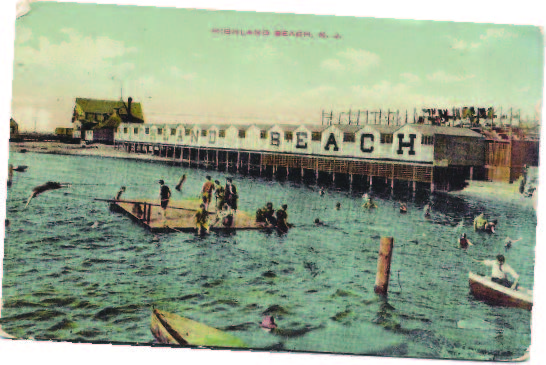


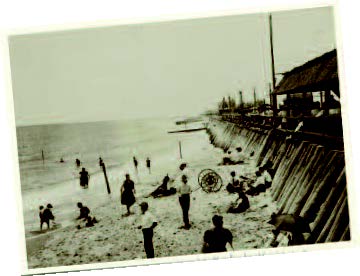

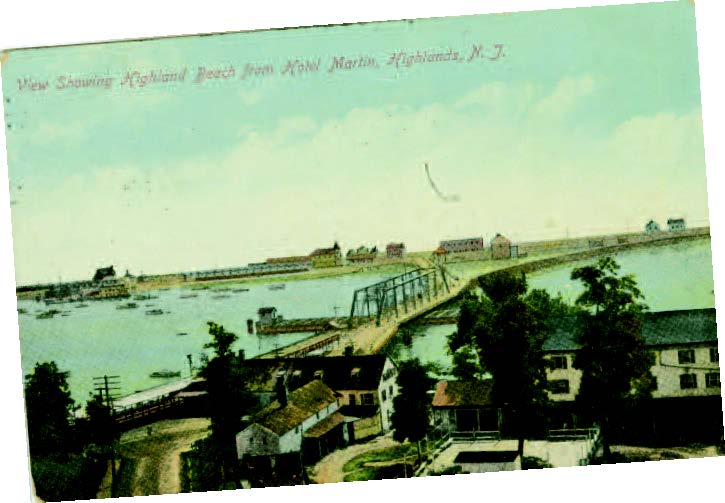




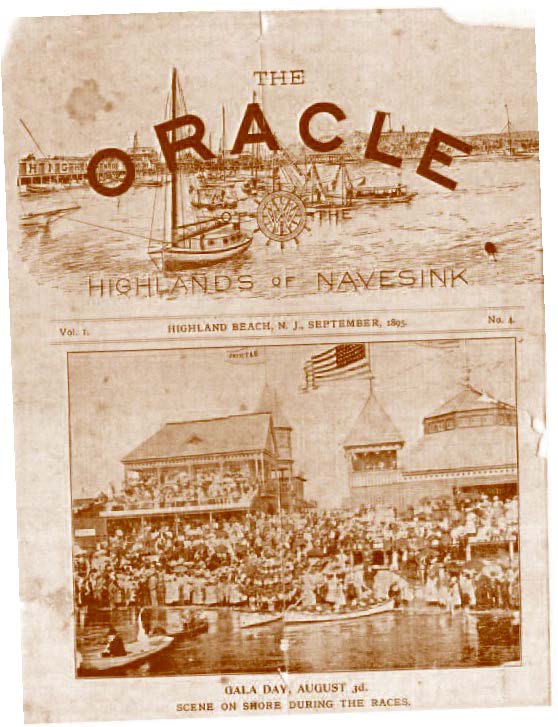

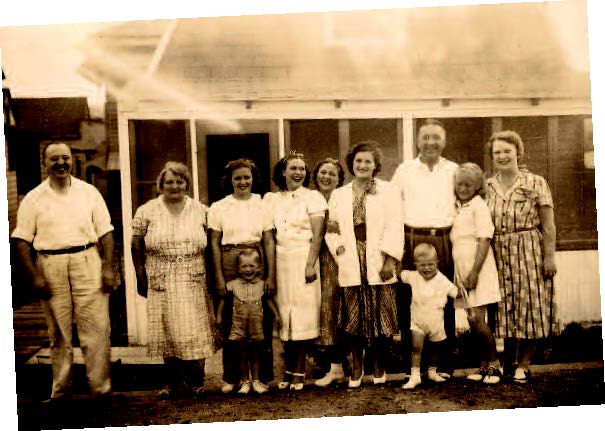
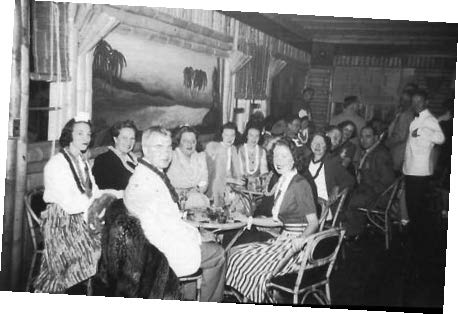
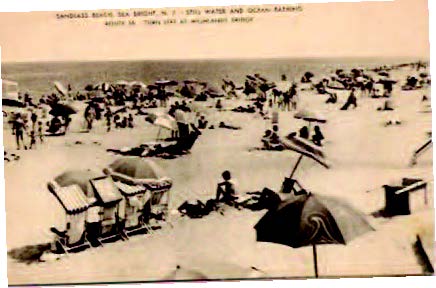
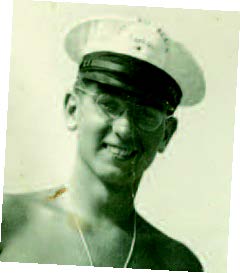
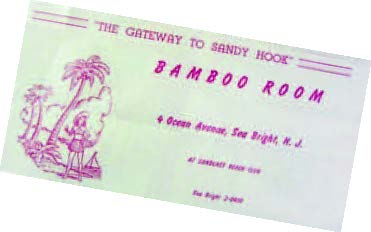





 Seventeen years ago, President Bill Clinton officially set aside March as National Colon Cancer Awareness Month. On the 3rd of the month this year, you’ll see a lot of blue stars around; that Friday is Dress in Blue Day (dressinblueday.org). The good news is that, since 2000, there has been a marked drop in colorectal cancer incidence—more than 30 percent among Americans 50 and older. The distressing news is that,
Seventeen years ago, President Bill Clinton officially set aside March as National Colon Cancer Awareness Month. On the 3rd of the month this year, you’ll see a lot of blue stars around; that Friday is Dress in Blue Day (dressinblueday.org). The good news is that, since 2000, there has been a marked drop in colorectal cancer incidence—more than 30 percent among Americans 50 and older. The distressing news is that, 

 Facebook took a lot of heat for propagating “fake news” during the past election, but according to researchers at Lancaster University, there’s something even more depressing: Facebook itself. In a survey of 35,000 people between the ages of 15 and 88, the Lancaster study found that Facebook users who compared themselves negatively with others were at increased risk of depression. Those at greatest risk were individuals who “friended” former partners, made frequent negative status updates or felt intense envy when they observed the “life highlights” of others. The research did point out that social media engagement could also help with depression—when used as a mental health resource or to enhance social support.
Facebook took a lot of heat for propagating “fake news” during the past election, but according to researchers at Lancaster University, there’s something even more depressing: Facebook itself. In a survey of 35,000 people between the ages of 15 and 88, the Lancaster study found that Facebook users who compared themselves negatively with others were at increased risk of depression. Those at greatest risk were individuals who “friended” former partners, made frequent negative status updates or felt intense envy when they observed the “life highlights” of others. The research did point out that social media engagement could also help with depression—when used as a mental health resource or to enhance social support. 
 More and more women are becoming mothers in their late 30s and 40s than ever before. Although there are certain health risks associated with later pregnancies, researchers at the University of Southern California report that women who have their final baby at age 35 or older appear to have an advantage later in life. The USC study looked at 830 post-menopausal women and noticed that those who had their last baby at age 35 or older had sharper cognitive skills at age 60 than women who stopped bearing children earlier on. Dr. Roksana Karim, who led the study, noted that she would not advise women to wait and have their final child after age 35.
More and more women are becoming mothers in their late 30s and 40s than ever before. Although there are certain health risks associated with later pregnancies, researchers at the University of Southern California report that women who have their final baby at age 35 or older appear to have an advantage later in life. The USC study looked at 830 post-menopausal women and noticed that those who had their last baby at age 35 or older had sharper cognitive skills at age 60 than women who stopped bearing children earlier on. Dr. Roksana Karim, who led the study, noted that she would not advise women to wait and have their final child after age 35. While medical researchers brave the wilds of the Amazon and other remote regions of the world to look for new medicines, researchers from Rockefeller University have discovered promising microbes a bit closer to home: in the dirt of New York City parks. According to the Proceedings of the National Academy of Sciences, researchers tested 275 samples and found genetic evidence of bacteria capable of producing a wide array of compounds that can be harnessed for new medicines for cancer, as well as for bacterial and fungal infections. “The sheer diversity we saw suggests there are many more potentially valuable compounds out there awaiting discovery,” says Professor Sean Brady, who heads up Rockefeller’s Laboratory of Genetically Encoded Small Molecules. “Even in a place as mundane as urban soil.” One sample from Brooklyn contained genes that encode 25 molecules that are being studied for potential use as antibiotics and other types of medicines.
While medical researchers brave the wilds of the Amazon and other remote regions of the world to look for new medicines, researchers from Rockefeller University have discovered promising microbes a bit closer to home: in the dirt of New York City parks. According to the Proceedings of the National Academy of Sciences, researchers tested 275 samples and found genetic evidence of bacteria capable of producing a wide array of compounds that can be harnessed for new medicines for cancer, as well as for bacterial and fungal infections. “The sheer diversity we saw suggests there are many more potentially valuable compounds out there awaiting discovery,” says Professor Sean Brady, who heads up Rockefeller’s Laboratory of Genetically Encoded Small Molecules. “Even in a place as mundane as urban soil.” One sample from Brooklyn contained genes that encode 25 molecules that are being studied for potential use as antibiotics and other types of medicines. So your big New Year’s resolution was to try your first 5K run this spring? Where there’s a will, there’s a way as they say. But you may need to do more than buy a
So your big New Year’s resolution was to try your first 5K run this spring? Where there’s a will, there’s a way as they say. But you may need to do more than buy a


 TOUCHDOWN FOR TRINITAS!
TOUCHDOWN FOR TRINITAS!  The future of healthcare is a topic of considerable debate in this country. Experts will argue endlessly the pros, cons and particulars of the various industry sectors, and consumer advocates will probably be battling with insurance companies until the end of time. Interestingly, there is one thing everyone seems to agree on: Integration of services is the key to any real
The future of healthcare is a topic of considerable debate in this country. Experts will argue endlessly the pros, cons and particulars of the various industry sectors, and consumer advocates will probably be battling with insurance companies until the end of time. Interestingly, there is one thing everyone seems to agree on: Integration of services is the key to any real  Regional Medical Center and St. Joseph’s Regional Medical Center in Paterson forged an Integrated Behavioral Health Network—one of the largest and most comprehensive in the region. The partnership was announced in late 2016.
Regional Medical Center and St. Joseph’s Regional Medical Center in Paterson forged an Integrated Behavioral Health Network—one of the largest and most comprehensive in the region. The partnership was announced in late 2016. 


 The Trinitas-St. Joseph’s Behavioral Health Network brings together more than 700 employees and staff members with an annual budget of $50 million. Patients will have access to more than 40 psychiatrists. The Network will provide more than 350,000 outpatient contacts in 2017 and over 3,000 inpatient admissions.
The Trinitas-St. Joseph’s Behavioral Health Network brings together more than 700 employees and staff members with an annual budget of $50 million. Patients will have access to more than 40 psychiatrists. The Network will provide more than 350,000 outpatient contacts in 2017 and over 3,000 inpatient admissions.  DID YOU KNOW?
DID YOU KNOW?
 For some families, a spring vacation can “go South“ at the end of the jet way. Follow these three rules and at least you’ll get to your destination unscathed.
For some families, a spring vacation can “go South“ at the end of the jet way. Follow these three rules and at least you’ll get to your destination unscathed.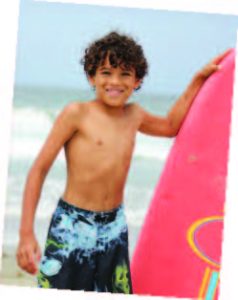 According to Travel Channel, these warm-weather destinations are among the hottest family vacation targets for Spring ’17:
According to Travel Channel, these warm-weather destinations are among the hottest family vacation targets for Spring ’17: Yelena Samofalov, MD Trinitas Pediatric Health Center 908.994.5750
Yelena Samofalov, MD Trinitas Pediatric Health Center 908.994.5750



 ROOM TO GROW
ROOM TO GROW














 Fiberglass pools are pre-fabricated (kind of like giant bath tubs), trucked to your site and can be fully installed within three weeks. Their initial cost is about the same as concrete. In terms of having to be resurfaced, that’s not something you’ll ever have to worry about—you’ll be long dead before the liner wears out. There is a savings on chemicals, and also on accessories such as steps and ladders, because they are incorporated into the design. The issues that many people have with fiberglass pools include the meager selection of sizes and shapes, and the fact that they cannot be more than 16 feet wide, because of trucking limitations.
Fiberglass pools are pre-fabricated (kind of like giant bath tubs), trucked to your site and can be fully installed within three weeks. Their initial cost is about the same as concrete. In terms of having to be resurfaced, that’s not something you’ll ever have to worry about—you’ll be long dead before the liner wears out. There is a savings on chemicals, and also on accessories such as steps and ladders, because they are incorporated into the design. The issues that many people have with fiberglass pools include the meager selection of sizes and shapes, and the fact that they cannot be more than 16 feet wide, because of trucking limitations. If, after weighing the pros and cons of a diving board, you decide it’s right for you, then there are two basic types to consider. Jump boards offer varying degrees of flexibility and spring action, while dive boards are fixed and relatively stiff. Some people get them mixed up because their names kind of describe each other. Jump boards are what we used to call “springboards”—the ones that literally had visible springs coiled at the base. Today’s jump board assemblies look more like the curved leaf springs you see under a truck.
If, after weighing the pros and cons of a diving board, you decide it’s right for you, then there are two basic types to consider. Jump boards offer varying degrees of flexibility and spring action, while dive boards are fixed and relatively stiff. Some people get them mixed up because their names kind of describe each other. Jump boards are what we used to call “springboards”—the ones that literally had visible springs coiled at the base. Today’s jump board assemblies look more like the curved leaf springs you see under a truck. Not every property is suitable for every type of pool. Some of the conditions that can add significantly to the expense of an in-ground pool are loose, sandy soil or soil that contains numerous large rocks and boulders. Also, depending on where you live, it may be worth checking how the land was used before a house was constructed on it. Someone is living on top of the 1890 town dump, right? Is it you? A surprise like that could add $10,000 or more (a lot more, actually) to the price tag of pool construction. Professional soil testing is a smart first step.
Not every property is suitable for every type of pool. Some of the conditions that can add significantly to the expense of an in-ground pool are loose, sandy soil or soil that contains numerous large rocks and boulders. Also, depending on where you live, it may be worth checking how the land was used before a house was constructed on it. Someone is living on top of the 1890 town dump, right? Is it you? A surprise like that could add $10,000 or more (a lot more, actually) to the price tag of pool construction. Professional soil testing is a smart first step.

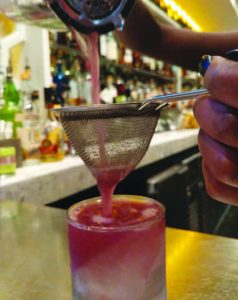 craft cocktail list sporting drinks named to prompt smiles and even giggles. Lavender Holyfield? Laird’s Gin, St. Germaine, fresh lemon juice, and a simple syrup scented with blueberries and lavender. Fallen Angel stars Angel’s Envy and a supporting cast of cold-weather add-ins. You can get a Who Killed Roger Rabbit, with Bulleit Bourbon, carrot juice, ginger beer and a bolt of thyme-infused simple syrup, or down Brunch on the Lower East Side without missing a trend: house-made bacon-infused bourbon, Knob Creek Smoked Maple Bourbon, vermouth and orange bitters. Catch the scene? You are supposed to have fun here.
craft cocktail list sporting drinks named to prompt smiles and even giggles. Lavender Holyfield? Laird’s Gin, St. Germaine, fresh lemon juice, and a simple syrup scented with blueberries and lavender. Fallen Angel stars Angel’s Envy and a supporting cast of cold-weather add-ins. You can get a Who Killed Roger Rabbit, with Bulleit Bourbon, carrot juice, ginger beer and a bolt of thyme-infused simple syrup, or down Brunch on the Lower East Side without missing a trend: house-made bacon-infused bourbon, Knob Creek Smoked Maple Bourbon, vermouth and orange bitters. Catch the scene? You are supposed to have fun here. yogurt that gave Middle Eastern nuance to the lamb, mint, and cranberries that offered throwback accenting tastes, and shavings of zucchini that provided a kind of palate cleanse between the variously spiced bites. Good stuff.
yogurt that gave Middle Eastern nuance to the lamb, mint, and cranberries that offered throwback accenting tastes, and shavings of zucchini that provided a kind of palate cleanse between the variously spiced bites. Good stuff. It should, if the Bacon Bolognese continues on the menu. It’s a kind of make-it-yourself carbonara, with a perfectly poached egg sitting atop peppery cavatelli tossed with applewood smoked bacon, tomato, and mozzarella. Prick the egg, let it run into the rest, toss (and toss some more), and you have a pasta dish for the ages. We liked it far better than the bland shrimp and grits, which had little presence of either the billed smoked cheddar or the lemon-garlic butter. Roasted Scottish salmon is the better choice in seafood, with a hot-sour broth fueled by tamarind and a stir-fry of tannic spinach that provided a counterpoint to the rich fish. A nightly special of steak tips plied with lemongrass didn’t make the point of why the beef needed that particular accent; it’s a dish that needs work. But Texas barbecue-style brisket? Sure thing. Belly up to that plate, complete with a Thanksgiving-ready creamy green bean-corn casserole and a splay of long-simmered onions.
It should, if the Bacon Bolognese continues on the menu. It’s a kind of make-it-yourself carbonara, with a perfectly poached egg sitting atop peppery cavatelli tossed with applewood smoked bacon, tomato, and mozzarella. Prick the egg, let it run into the rest, toss (and toss some more), and you have a pasta dish for the ages. We liked it far better than the bland shrimp and grits, which had little presence of either the billed smoked cheddar or the lemon-garlic butter. Roasted Scottish salmon is the better choice in seafood, with a hot-sour broth fueled by tamarind and a stir-fry of tannic spinach that provided a counterpoint to the rich fish. A nightly special of steak tips plied with lemongrass didn’t make the point of why the beef needed that particular accent; it’s a dish that needs work. But Texas barbecue-style brisket? Sure thing. Belly up to that plate, complete with a Thanksgiving-ready creamy green bean-corn casserole and a splay of long-simmered onions. INC has a multi-page whiskey menu that is presented at the start of a meal. The time it could take to digest this whiskey bill of fare might prevent you from actually dining, but it is a major attraction for whiskey lovers. Take the Manager’s Reserve List: There’s Corsets, Whips and Whiskey, Elijah Craig Barrel Proof, and Noah’s Mill. You also can do whiskey flights: Where There’s Smoke There’s Islay Scotch, Rye Not? and In ‘Bond’ We Trust. It’s all in good fun.
INC has a multi-page whiskey menu that is presented at the start of a meal. The time it could take to digest this whiskey bill of fare might prevent you from actually dining, but it is a major attraction for whiskey lovers. Take the Manager’s Reserve List: There’s Corsets, Whips and Whiskey, Elijah Craig Barrel Proof, and Noah’s Mill. You also can do whiskey flights: Where There’s Smoke There’s Islay Scotch, Rye Not? and In ‘Bond’ We Trust. It’s all in good fun.
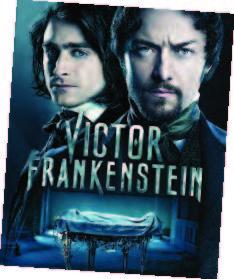
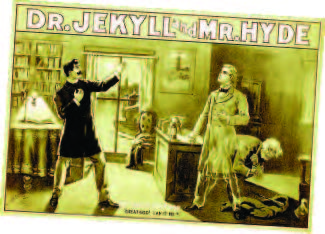


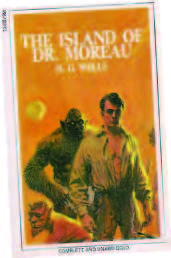





 KNOT A PROBLEM
KNOT A PROBLEM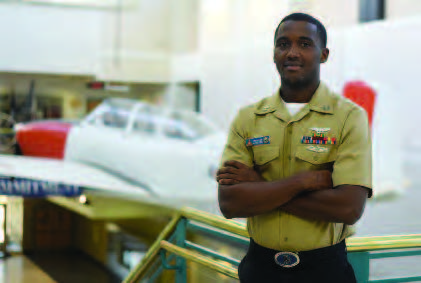

 You can quibble with these numbers—they rise and fall depending on clinical criteria and also who’s doing the studies—but there is no arguing that depression has a crippling effect on almost every aspect of the pursuit of happiness in America. On one end of the spectrum, it may involve temporary sadness (aka “the blues”). On the other end, it can last indefinitely, profoundly diminishing quality of life to the point of complete dysfunction. According to the Anxiety and Depression Association of America, depression is the leading cause of disability worldwide. People with depression may also suffer from anxiety disorders, which are different, but share similar symptoms—including insomnia, the inability to concentrate, nervousness, and irritability.
You can quibble with these numbers—they rise and fall depending on clinical criteria and also who’s doing the studies—but there is no arguing that depression has a crippling effect on almost every aspect of the pursuit of happiness in America. On one end of the spectrum, it may involve temporary sadness (aka “the blues”). On the other end, it can last indefinitely, profoundly diminishing quality of life to the point of complete dysfunction. According to the Anxiety and Depression Association of America, depression is the leading cause of disability worldwide. People with depression may also suffer from anxiety disorders, which are different, but share similar symptoms—including insomnia, the inability to concentrate, nervousness, and irritability.  The good news is that doctors have an ever-growing arsenal of pharmaceutical solutions. These medications have changed the game for millions of sufferers. The not so- good news is that a high percentage of individuals—as many as half of the 15 million people experiencing depression—either cannot tolerate or do not respond to these drugs.
The good news is that doctors have an ever-growing arsenal of pharmaceutical solutions. These medications have changed the game for millions of sufferers. The not so- good news is that a high percentage of individuals—as many as half of the 15 million people experiencing depression—either cannot tolerate or do not respond to these drugs. Elizabeth-based Medical Center assumes ownership of Bayonne Community Mental Health Center The healthcare world is in a rapid state of transformation where new opportunities often arise to elevate the level of care. Such an opportunity presented itself in 2017, when the Board of Trustees of Bayonne Community Mental Health Center (CMHC) elected to have Trinitas Regional Medical Center assume ownership of the CMHC. “This transition to ownership by Trinitas promises to be as seamless as possible. There are no plans for any interruption or major changes in the name, services, personnel, hours, location or anything else that would impact the clientele or the community,” explained Joseph M. Kadian, Psy.D., President and CEO of the CMHC.
Elizabeth-based Medical Center assumes ownership of Bayonne Community Mental Health Center The healthcare world is in a rapid state of transformation where new opportunities often arise to elevate the level of care. Such an opportunity presented itself in 2017, when the Board of Trustees of Bayonne Community Mental Health Center (CMHC) elected to have Trinitas Regional Medical Center assume ownership of the CMHC. “This transition to ownership by Trinitas promises to be as seamless as possible. There are no plans for any interruption or major changes in the name, services, personnel, hours, location or anything else that would impact the clientele or the community,” explained Joseph M. Kadian, Psy.D., President and CEO of the CMHC.  The field of Electrophysiology (of which Transcranial Magnetic Stimulation is a part) is nothing new. In fact, it dates back centuries. Near the end of the 18th century, Luigi Galvani first performed the same experiment you probably did in high-school Biology: noting that the legs of a dead frog twitched when touch by an electrical current. Galvani’s name is still with us today (galvanization). Several decades later, another giant in the history of science, Michael Faraday, did groundbreaking work in electromagnetism and electrochemistry, which established the foundation for research on brain stimulation through electricity and magnetism. By the mid-1900s, electroconvulsive therapy was widely used to treat major depression and other forms of mental illness. The first use of magnetic fields on electric signaling in the brain began in the 1980s, primarily for diagnostic purposes. By the early 2000s, however, researchers started noting the therapeutic possibilities of TMS.
The field of Electrophysiology (of which Transcranial Magnetic Stimulation is a part) is nothing new. In fact, it dates back centuries. Near the end of the 18th century, Luigi Galvani first performed the same experiment you probably did in high-school Biology: noting that the legs of a dead frog twitched when touch by an electrical current. Galvani’s name is still with us today (galvanization). Several decades later, another giant in the history of science, Michael Faraday, did groundbreaking work in electromagnetism and electrochemistry, which established the foundation for research on brain stimulation through electricity and magnetism. By the mid-1900s, electroconvulsive therapy was widely used to treat major depression and other forms of mental illness. The first use of magnetic fields on electric signaling in the brain began in the 1980s, primarily for diagnostic purposes. By the early 2000s, however, researchers started noting the therapeutic possibilities of TMS.
 …you use DNA, DNR and DMV interchangeably.
…you use DNA, DNR and DMV interchangeably.
 …you have to spell-check MRI.
…you have to spell-check MRI.
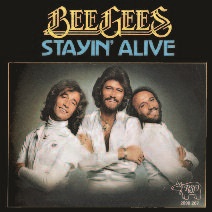
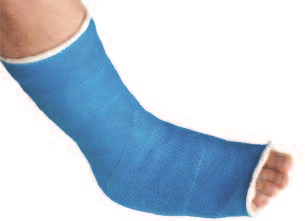 …your advice to someone who broke their leg in
…your advice to someone who broke their leg in
 …you think Pepcid AC is a
…you think Pepcid AC is a

 A New Line in the Sand
A New Line in the Sand  Danger Alert for TV Binge Watchers
Danger Alert for TV Binge Watchers  Now Hear This
Now Hear This  Is Chocolate a “SAD” Solution?
Is Chocolate a “SAD” Solution?  Double Trouble
Double Trouble  Is That Cigarette Really Worth Seven Years?
Is That Cigarette Really Worth Seven Years? 
















